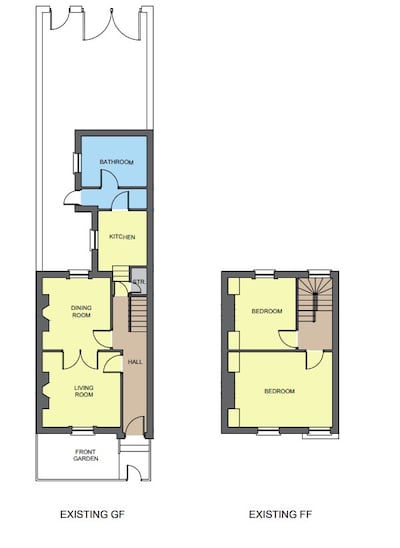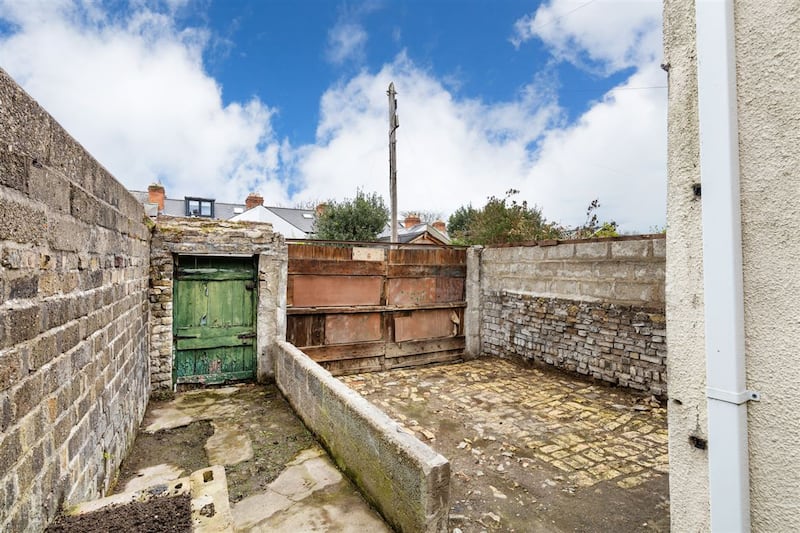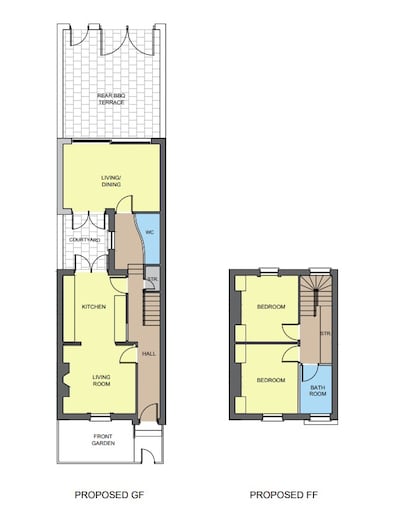Number 16 Carlingford Road, a two-bedroom redbrick built in the late 1800s, has come to the market in Drumcondra through selling agent Sherry FitzGerald with an asking price of €459,000. Number 58 on the same road, which had been extended and refurbished, sold for €680,000 last year, so although a new owner will have to invest further to update this property, its future sale price should reflect whatever improvement is made.
The 88sq m (947sq ft) property sits on a quiet and well-established road in the vibrant village, just down the road from the well-known Andersons Creperie, and is convenient to plenty of pubs, cafes and restaurants in the village. It is also close to Dublin City University’s St Patrick’s campus, the National Botanic Gardens and Griffith Park. In terms of commuting, it’s just a 10-minute cycle or 25-minute walk from Dublin city centre while regular buses stop within a short walk of its front door.
The Irish Times invited Hugh Wallace of the Douglas Wallace architectural practice and judge and presenter with RTÉ's Home of the Year and The Great House Revival, to take a look around number 16 Carlingford Road and give his take on how best to renovate this attractive terraced property.

“There’s great possibilities with this house,” says Wallace of the home that, although dated, benefits from a handsome facade, high ceilings and original period coving.
READ MORE
Starting with the reception room to the front of the ground floor, Wallace suggests setting it up as a versatile living space that could be used as an office or a spare bedroom with a pull-out couch for visitors.
There are suspended timber floors under the carpet here, he points out, which could be taken up to install underfloor heating: “Then you’ve got no radiators and it gives you flexibility with furniture placement,” says Wallace. Such insulation, along with replacing the windows for modern double-glazed models, will improve the property’s energy rating, which is a lowly G.
The front reception room is connected to a second reception room/diningroom through double doors; Wallace suggests turning the latter space into a new kitchen and replacing the window facing the back garden with French doors to allow more light into the house while also providing easier access to what will become a new internal courtyard space.

Further along the entrance hall is the house’s existing and rather narrow kitchen. Wallace would remove the existing kitchen to leave a hallway with built-in storage leading to a new and extended living/diningroom. There would also be space for a convenient downstairs loo off this hallway.

Much of the space for the new living/diningroom is occupied by the existing bathroom and a portion of the rear yard. The proposed open-plan space would lie on the opposite side of the internal courtyard from the new kitchen. The courtyard will, says Wallace, flood the kitchen and living/diningroom with natural light thanks to the house’s favourable orientation. Access to the rear of the house will be retained via the terrace that will be established behind the new living/diningroom.
“I’m going to have big windows [French doors] here [in the back wall] out on to this terrace, which is so private and grabs all that south and westerly sun,” says Wallace. “The perfect place for your barbecue.”
Upstairs
“Normally, in a house like this, I’d suggest the bathroom is an extension at the back of the house [on the first floor] but I don’t believe that’s necessary [here],” says Wallace, suggesting instead to hive off a section of the large main bedroom at the front of the property. “This bedroom is a great size and it’s big enough to put the shower room here and still have a big bedroom with lots of storage,” he says.
As the property has been vacant for more than two years and built before 2007, it is eligible for the Government’s vacant property refurbishment grant, which provides up to €50,000 for those who will make the property their primary private residence and for those who plan to rent it out.
Although the house is more than 100 years old, it is in excellent structural condition, Wallace says, and his advice to the “lucky person” who buys it is “move into it, listen to it, and then decide how you’re going to live in it”.













